renaissance





The revival of or renewed interest in something.

This is our theme for the spring 2023 edition of Moody Magazine.
It is not just the name of Beyonce’s most recent album, but the state of media today.
Communication is changing at a faster rate than ever before. People are unsubscribing from newspapers. They are cutting the cord on cable television. And some worry that AI will replace journalists entirely in the not so distant future. It is all on the table.
In this critical moment, journalists are taking up arms with their most powerful weapons –the facts, accuracy and ethics. These everlasting tools will remain necessary as the media’s rebirth, or rapid “renaissance” unfolds.
We’re examining these tools and what is next for communication in this edition of Moody Magazine.




ALEX ROEDER
Editor-in-chief
ATHENA HAWKINS
Editor & Chair Pair
GRACE XU
Illustrator & Layout Designer
KASSIE ARAQUE Reporter

LOGAN DUBEL Reporter & Section Editor

TRINA NGUYEN Reporter
*Not Pictured: Sandhya Maddali, Reporter
ALAYNA KOZAK Reporter
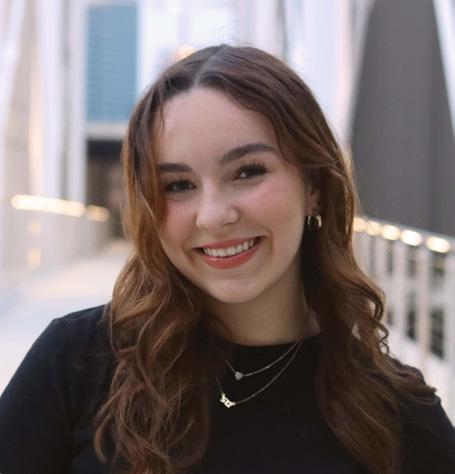

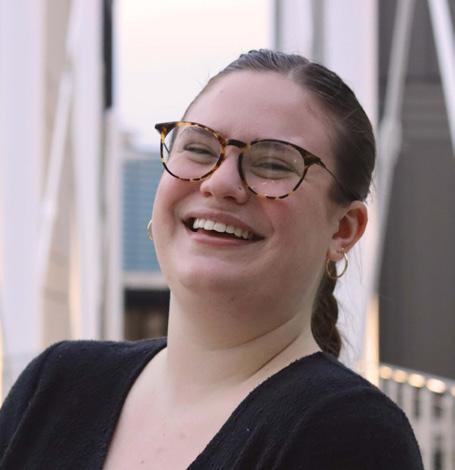
AVA CHEONG Reporter
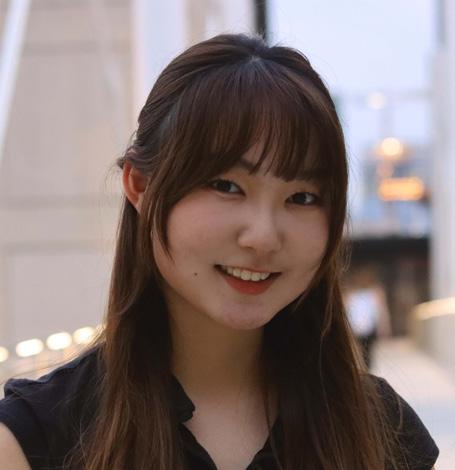
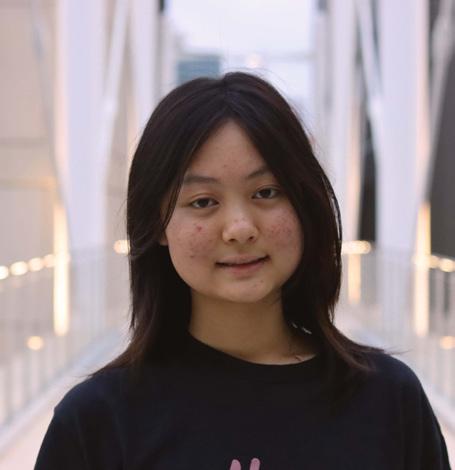

The beginning of new semesters can be daunting - new classes, trying to find organizations to join - it’s sometimes a little overwhelming to find things that feel like a good fit. This issue’s Moody Bulletin will highlight some organizations students recommend you look out for, as well as some cool classes to watch for in the fall catalog!

“My favorite RTF class right now would have to be Cinema Lab. Basically it’s a class where we make a new film every week, in class, with a prompt that’s given to us on the day. It’s super fun, and I’ve made some cool stuff I never would’ve thought of if it weren’t for that class. Shoutout Deb Lewis!”
-Shyam
Madhav“My favorite comms studies class is CMS 316L, called interviewing principles and practices. It is a great class that has pushed me outside of my comfort zone while also helping me work on my networking and interviewing skills.”
-Quinn Radtke“Reporting words is an amazing class! It taught me a lot about journalistic writing, and though it was hard to change my whole writing style, there was so much support from the professors and fellow students. I left every assignment feeling proud of the improvements I’d made as a writer! Fully recommend.”
-Sandhya
Maddali“Working at The Daily Texan has helped me gain so many technical skills while also being in a supportive environment. I’ve worked as a News General Reporter, a Life and Arts General Reporter, and now I’m a Senior LARTs reporter!
I’ve written so many stories about the things I’m passionate about— local news, change-makers, artists and businesses. My writing and reporting has grown so much since I’ve joined The Texan, and I’ve also gotten so many cool opportunities, including covering SXSW! The Daily Texan is a great newspaper that really prepares its student reporters for their future careers.”
-Trisha Dasgupta“I joined A La Moda as a way to express my creativity and meet other creatives in the Austin area! I have really enjoyed the creative freedom A La Moda has given me, especially as a smaller artist who is mostly building up my portfolio and creating as a way to have fun. A La Moda offers a lot of various positions and you are allowed to do more than one position per volume. I personally really like how they have options for visual artists and writers to showcase their work in the printed issue and in art shows, as not many other magazines offer that. I have loved everyone I have worked with in my teams and really do believe it is an inclusive space, no matter how much or how little experience you have. A La Moda is super flexible and will work with you to accommodate all your creative desires!”
-Elina Chen“Being a part of Drift Magazine has made a big school feel small: each week, we meet and discuss how we can realize our vision of enjoying the outdoors through media content like our podcast, online publication and Instagram. At Drift, our members collaborate and learn together to ensure journalistic integrity and a good time.”
-Rushton Skinner“Texas Tower is UT’s premiere student run PR firm working with real clients including local Austin small businesses and nonprofits. This spring marks my one year anniversary working there with long term client Austin Speech Labs, a nonprofit working to help stroke survivors. My work as a PR manager includes media relations, press releases and contributing to a team where we gain internship level experience.”
-Josh
L

When the first handheld Texas Instruments calculator made its way into students’ hands in 1967, teachers held their breath. When Silicon Valley created Google in 1998, educators worried. However, when ChatGPT-3.5 launched in November, everyone’s jaws dropped.

Writing an essay, news story or persuasive speech all became possible through a single prompt, with varying rates of success. To many, something about this invention feels different.
For the Moody College of Communication’s School of Journalism and Media, ChatGPT challenges everything professors teach - originality, ethics and human impact.
Longtime instructor Diana Dawson said she first learned about the software at a faculty workshop before the end of the fall semester. While the veteran journalist said she left the meeting feeling uncertain about the software’s eventual capabilities, she knew her advice for students.
“My message was not going to be to lump it under academic dishonesty,” said Dawson, the founding director of the Moody Writing Support Program and an assistant professor of instruction. “But I was going to say, ‘My classes are designed to help develop your own craft of writing. So don’t cheat yourself. Don’t do yourself a disservice by taking a shortcut.’”
Dawson’s warning comes as a January survey from the online publication Intelligent shows that nearly one in three college students have turned to the chatbot when completing written assignments. While faculty may not have clear methods to spot student use of artificial intelligence, Dawson said that ChatGPT lacks the original brainpower students need.
“I have a lot of students who have a hard time doing what I call thinking around the edges of a story,” Dawson said. “I want to see students doing critical thinking about what belongs in a news story and what doesn’t… I would hate to see a dependence on something like this keep them from doing that.”
Still, Dawson admits that existing online tools increase accessibility for journalists, and that if used ethically, ChatGPT could do the same.
“When I was a reporter, I didn’t have Google, and that shocks students now. How could you even function as a reporter without Google? Well, we had books and maps that we had to use,” Dawson said. “(Google) has strengthened our ability to do reporting in many ways, and I think the key is that we don’t want to paint (ChatGPT) as one color right now because we really don’t know where it might be productive.”
Dawson said that the news should move us forward, but with ChatGPT behind the byline, that may not be possible. The current iteration of the chatbot feeds from datasets through September 2021, meaning that it lacks knowledge of facts or world events from the past year and a half and could mislead users with outdated information.
Still, ChatGPT marks only the beginning of AI’s entry into classrooms and media. OpenAI launched an updated version, GPT-4, in March, which surpasses its predecessor through image analysis. The refreshed chatbot remains unavailable to the general public but will undoubtedly raise eyebrows yet again once released.

For now, Dawson characterizes AI’s move into media as a cautious waiting game.
“I think that a lot of communication professionals in the future will be asked to use it in some ways, so we can’t paint it as dishonest or evil. Think about Grammarly and spell check – those have all become useful tools,” Dawson said. “I think that our messaging about its use and our acceptance will evolve as our understanding evolves.”
Write a about the benefits and risks of the use of ChatGPT in jour-
ChatGPT, an AI language model, is increasingly being used in journalism to speed up fact-checking and reporting, but experts warn that

Reporter’s Note: Responses generated by ChatGPT pull from a dataset that stops in September 2021. If a journalist sought information or a fully-written story about something occurring in more recent months, the chatbot would prove useless.
Prompt: Write a news story about the assassination of former Japanese Prime Minister Shinzo Abe.
ChatGPT Response: Former Japanese Prime Minister Shinzo Abe is still alive as of my knowledge cutoff date, which is September 2021. I do not have any information suggesting that he has passed away since then. However, it’s important to note that my knowledge may not be up-to-date with any recent events or news
ChatGPT, an AI software that can churn out fully written papers with an input of just a few words, has gained a significant amount of popularity since its launch in November of last year. The new software has taken the world by storm - but not without leaving a significant amount of controversy in its wake.
It raises many ethical questions about using AI for writing, and since its release there have been a multitude of ChatGPT-related issues at various universities. Both universities and students have been called out for abusing the software.
In the aftermath of the mass shooting at Michigan State University, Vanderbilt University was caught using ChatGPT to write a statement to their students. The message sent actually included an attribution to ChatGPT at the bottom, and students picked up on it almost immediately after the statement was sent out.
The use of ChatGPT in times like these absolves the universities of having to think about communications with their students. Students also felt the use of ChatGPT was insensitive to the situation. The school did issue another apology statement after being called out, but situations similar to this could easily arise in the future as ChatGPT increases in popularity.
Meanwhile, multiple schools have banned students from using the software, while other educators have embraced ChatGPT, including it in educational plans. New York City public schools banned ChatGPT from all student devices and networks. University of Iowa professors attempted to incorporate ChatGPT in assignments, noting that students would use it regardless.
Though adept for AI software, ChatGPT is hardly consistent. Many have put it to the task of taking exams, and it hasn’t always been able to pass. A new model released by OpenAI called GPT-4 aims to make improvements on the areas where ChatGPT falls short. GPT-4 evidently can accept more input and is able to understand prompts better than its predecessor.
This update comes soon after ChatGPT’s release, and it seems on track to develop further. This continuous development has actually caused Elon Musk and other big tech players to urge companies to stop updates for some time to curb the power of AI as it continues to develop.
As OpenAI and other AI softwares update and improve, it will be interesting to see how their capabilities expand. The way technology has grown - for better or for worse - is certainly intriguing, but only time will tell how this sort of technology will affect society in the long term.
In a future not so far away....
In a future not so far away....
In a future not so far away....
In a future not so far away....
In a future not so far away....
In a future not so far away....
In a future not so far away....
We may share a byline with ChatGPT
We may share a byline with ChatGPT
We may share a byline with ChatGPT
We may share a byline with ChatGPT
We may share a byline with ChatGPT
We may share a byline with ChatGPT
We may share a byline with ChatGPT
Written by Kassie Araque Illustrated by Alex RoederBrewing within the walls of the University of Texas, in the early stages of infancy, is a newspaper guided by artificial intelligence.
The project started as curiosity from Associate Professor of Practice Robert Quigley, who teaches in the School of Journalism and Media. He said he wondered how the evolution of AI would change journalism. With this in mind, he approached Assistant Professor of Practice Christian McDonald with the idea to test the connection between AI and journalism in the form of a newspaper.
“I do feel like there’s a decent chance that AI will become a pretty integral part of everybody’s lives in various ways,” Quigley said.
The project started in January and is funded by the Dallas Morning News Innovation Endowment. Two AIs will be used in the project, both created by a company called OpenAI. The first is ChatGPT, a chatbot that boomed in popularity after its beta release in {} The AI has raised big questions in academia because it can write complete essays based on a simple prompt. The second, DALL-E, is an AI that creates realistic and artistic prompt-based images.
“Surely it can write all our headlines, but can it write the stories, can it do the captions for photos? Can Dall-E do the photo illustrations? Can it put together an email newsletter? Can it write Instagram posts, can it make breaking news alerts?” Quigley said, referencing the relationship between the paper and the AI.
The project employs two students, Gracie Warhurst, an undergraduate learning assistant for Quigley’s Digital Storytelling Basics class, and Sophia Kurz, a senior journalism and data science double major. Both students were compensated for their work in the project via the fund. The students document the work between them and the AI closely to exercise the limits of the technology. Kurz and Warhurst also work together on a literary magazine Warhurst founded, The ATX Review.
“It helps that they already have a working relationship. And if there’s just two of them on this project, they need to get along and understand each other,” Quigley said.
Quigley also said that the goal of the project is transparency. Each byline would contain the name of the reporter and the AI, and they aim to avoid any confusion over the origin of the articles.
Some journalists see AI as a potential threat to an already delicate industry. Last month, Buzzfeed began using AI to create content. As of now, the AI-written articles are mostly the outlet’s infamous quizzes, but job security is a popular topic of conversation right now.
Quigley said he sees AI more as a tool than a threat. There is a possibility that AI could take over some of the more mundane tasks in journalism, such as coming up with interview questions or headlines. This could offer reporters more time for investigative journalism and feature stories.
“I think there’s still a lot of value in humans doing journalism, everything from going out into the field to capture stuff, to writing with the unique, creative flair that only humans can do right now,” Quigley said.
The project is just getting started, Quigley said. The group is in the process of setting up a website and getting a domain, then they’re planning to collaborate on design choices with the AI. He said it could be anywhere from a couple weeks to a couple months before the site’s debut.
“I think curiosity wise, it’s a good way to get some answers to the questions we have,” Quigley said.
Carolyn Parmer was utterly uninterested in functions and figures as a college sophomore. Scarred from high school math experiences she called “bad,” Parmer avoided all things numbers. But all that changed when she discovered data journalism.
What initially sounded like “a lot of numbers” turned into a love affair with data reporting, which she now considers a potential career.
The third-year journalism student said her firm antimath stance slipped after Christian McDonald, an assistant journalism professor, promoted a course called Reporting With Data in one of Parmer’s classes.
“McDonald’s presentation was so interesting. He was like, ‘Yeah, I still count on my fingers. I still use a calculator to leave tips at restaurants,’” Parmer said. “So I thought, ‘Maybe I can take this class.’”
“I was like, ‘OK, this is real. I’m going to network and meet people who have the jobs that I can now see myself doing,’” Parmer said. “It was a lot of, ‘I don’t know what I’m doing here. But I’m interested and hoping to get back next year!’”
“It was really cool to know that someone in the data journalism industry is passionate and doing work for a goal that I myself want to do,” Parmer said. “That also reassured me that your favorite podcast hosts, they’re still humans too!”
Skill sessions and panel discussions at NICAR confirmed what Parmer discovered at the University of Texas — data deepens rich reporting. After NICAR, Parmer practiced her newfound digital skills within a variety of reporting styles, including investigative work and music writing.
Parmer enrolled in Reporting With Data the next fall. In one semester, she learned how to code in the R programming language and marry data analysis with reporting techniques. She unlocked massive datasets and discovered newsworthy insights, ranging from the number of Harry Styles’ appearances on the Billboard Hot 100 list to the value of U.S. military equipment loaned to local police departments in Texas.
“As much as I love reading and writing, I found myself liking the black-and-white, logical side of numbers,” Parmer said. “It let me explore other interests I had pushed aside, because I assumed journalism was only about writing and talking to people.”
Parmer applied in November on a whim for NICAR, the National Institute for Computer-Assisted Reporting. She found herself packing for the data journalism conference in Nashville, Tennessee a few months later.
“I think that’s what’s fun about data journalism,” Parmer said. “You can do these super long-form, investigative pieces about sexism and discrimination, or you can write about cheese.”
Students in Reporting With Data cleaned and analyzed datasets of their choice and reported a news story based on the findings for the final project. Projects in Parmer’s class took a peek at Broadway ticket sales, Austin MetroBike statistics and U.S. cheese storage figures.
“I didn’t know exactly what I was getting myself into, but I love this field,” Parmer said. “I don’t know exactly where it’ll go, but what’s comforting is that in data journalism, you get to figure it out as you go along.”
 By Kassie Araque
By Kassie Araque
Christian McDonald, Innovation Director for the School of Journalism and Media, earned an assistant professor position at the University of Texas at Austin in 2018 after five years as a lecturer. Now, McDonald teaches three courses in the Moody College of Communication exploring the growing connection between technology and journalism.
Before UT, McDonald was the data and online projects editor at the Austin American-Statesman, where he produced data stories for print and online. McDonald found unique ways to present topics outside traditional print or video formats, such as “scrollytelling” — a type of online content where graphics and statistics appear on the screen as the reader scrolls through the article.
“I feel strongly that a lot of our best journalism is born from data,” McDonald said.
McDonald also teaches the university’s Digital Innovations Capstone, a journalism course funded by the Dallas Morning News Innovation Endowment. The class teaches students the principles of design thinking and sees them work collaboratively to develop and market their own products. Final projects from the course range from podcasts to mobile apps and bots.
“It’s trying to bring that mindset to journalists, or expose journalists to that mindset, so that we can build better news products for people in the future,” McDonald said.
McDonald is also a regular attendee at the National Institute for Computer-Assisted Reporting, an annual data journalism conference. Investigative Reporters and Editors hosts the conference, which it founded in 1989. Skills sessions and panels train journalists to retrieve and analyze data ethically. McDonald estimated that out of the over 900 people in attendance at this year’s conference, about 40% were first-time attendees.
McDonald attended the 2023 conference in early March with eight current UT students, but the professor said he was happy to see a few former students as well. McDonald said he enjoys the collaborative, supportive culture at the conference the most.
“It’s home for me. It’s like these are my people,” McDonald said.
The data journalism subgenre saw an exponential rise in recent years, and McDonald said he makes an effort to teach with transparency and promote repetition. McDonald uses open-source code, so others can easily fact-check him or apply their research to any work he produces within their own communities.
McDonald said open-source code also allows him to fact-check his own findings with experts in the field, and easily explain his processes. It also makes it easier for students to identify and correct their mistakes.
“I like teaching,” McDonald said. “Data being a part of journalism, it helps kind of push back against that hashtag #FakeNews kind of mentality.”








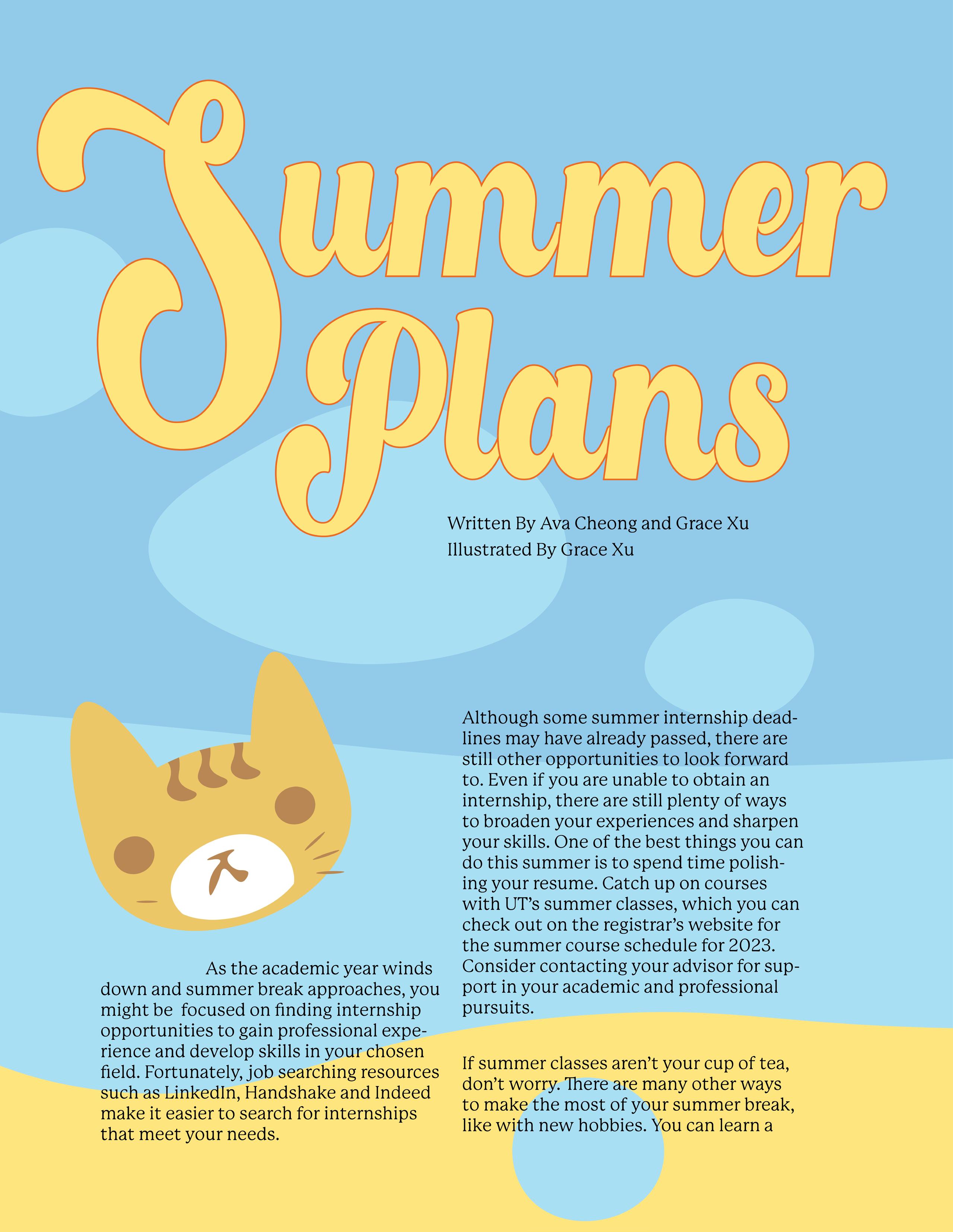



Hi everyone, my name is Madison Morris and I am a rising senior public relations and journalism major from Houston, Texas. This upcoming year, I’m beyond excited to serve as president of the Communication Council. Outside of Communication Council, I also serve as Chair of the Big XII Conference on Black Student Government and historian of the Delta Xi chapter of Alpha Kappa Alpha Sorority, Inc.

When I first learned of Communication Council my freshman year of college, I felt compelled to apply because my personal values aligned with the organization’s commitment to improving the Moody College experience for students and faculty alike. I can confirm that since joining in spring 2021, I have found a true sense of community within the org through the wonderful people I have gotten to know. I’m most looking forward to working with the exec board toward strengthening Communication Council’s relationship with administration as well as fellow Moody organizations through collaborative events to improve the overall Moody student experience.
Hook ‘em!


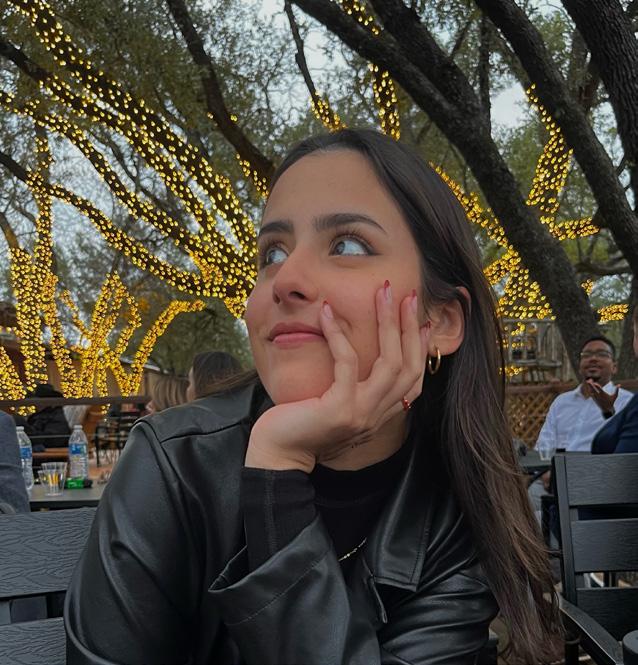

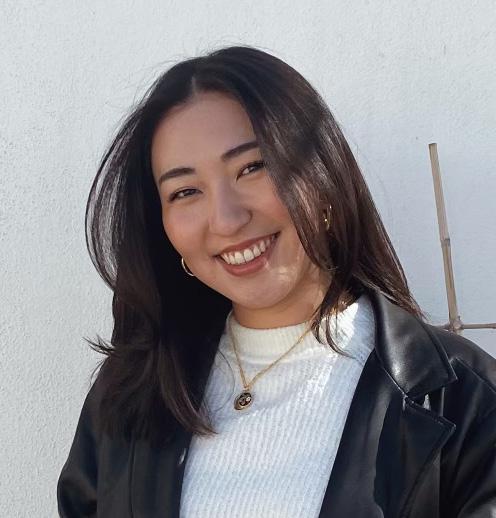
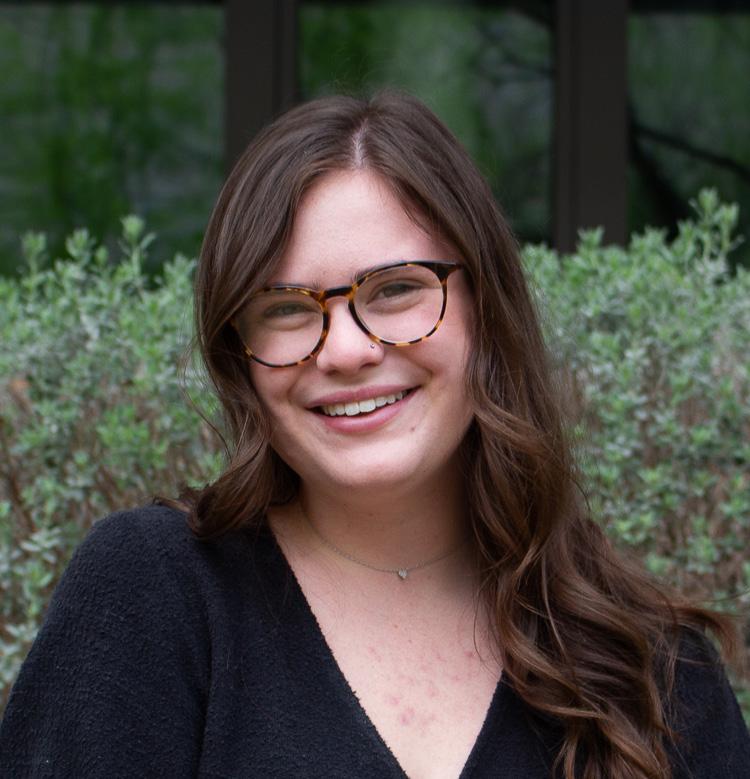 ALEX ROEDER Administrative Director
VALERIE MORALES
Diversity, Equity and Inclusion Director
GISELLE YOSHIMOTO Financial Director
QUINN RADTKE External Director
JULIETA CAVAZOS Internal Director
ALEX ROEDER Administrative Director
VALERIE MORALES
Diversity, Equity and Inclusion Director
GISELLE YOSHIMOTO Financial Director
QUINN RADTKE External Director
JULIETA CAVAZOS Internal Director